Article by Louie Simmons
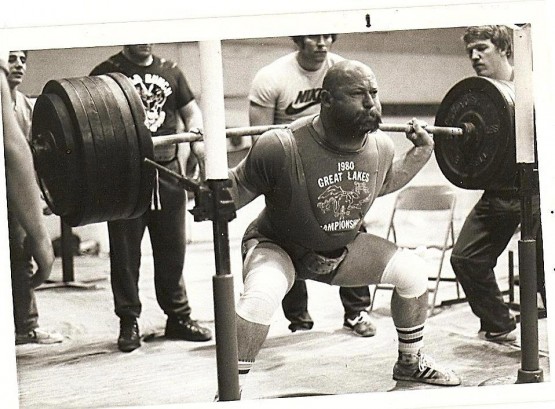
There is much talk about training philosophies, methods, and methodologies. It seems everyone has their own, which they devised on the basis of their own experience. They recommend such strategies as doing reps to failure to eliminate assistance work and doing only the squat, bench press, and deadlift.
Have you ever wondered what the author has accomplished as a lifter, a trainer, or a scientist? Did they ever total Elite or field a team of Elites at a national meet? Did they ever make a top ten lift in one or more categories? Or is what they are doing a personal philosophy with no proven results?
It has been asked what philosophy Westside adheres to. The answer is none. We use training methodologies and the science of methods. Everything we do is based on a scientific principle.
We can not be so arrogant as to form a personal philosophy. At Westside, we are responsible not only for our own training but for the training of our loyal readers. Many of our “extended members” have become national, world, and European champions.
Training is not as simple as doing five sets of five reps, five sets of ten reps, or any combination of sets and reps. You must plan to obtain certain objectives. Increases in speed, explosive strength, absolute strength, and stamina are equally important. It has been known and discussed in Weightlifting for All Sports by Ajan and Baroga that a greater training result can be obtained over a greater length of time by using special exercises than by doing the classical lifts.
Doing the same exercises repeatedly will rapidly decrease your coordination. There are many reasons for this. Our observation is that very few lifters can increase their abilities without special exercises.
How do we train heavy continuously? The answer is to pick several special barbell exercises for a particular lift (e.g. the deadlift). The good morning is very similar in motion to deadlifting.
A conventional deadlifter will no doubt bend over. Therefore, bent over good mornings will increase the deadlift. But remember, when doing the good morning, you must duplicate the action of your deadlift precisely in your brain. It is not so important to raise your good morning as it is to raise your deadlift by performing the good morning. We do many types of good mornings such as one with a safety squat bar suspended from chains. Remember to use the same body mechanics as you do in the deadlift.
Conjugate Method
A question that should be addressed is, when handling max lifts, how do you recover? And how do you at the same time increase muscle mass? The conjugate method is the answer.
This is a complex method of rotating special exercises that are close in nature, in our case, to the power lifts. This method also increases special strength qualities and perfects coordination, which will help advance technical skill.
First, and most important, is to properly select exercises that address your particular problems. It could be an exercise that will build up a lagging muscle group or a special strength such as starting, eccentric, or accelerating strength.
Many methods are combined and rotated in the conjugate system. Combining the speed and max effort days, five elements of strength are trained:
1. quickness
2. explosiveness
4. speed-strength
5. strength-speed
6. absolute strength
This is much like a five-speed transmission in a car. We all know what happens if you miss a gear or take off in the wrong gear. Your car doesn’t run very efficiently and neither will you. One must learn many methods to develop special strength and when to use them. You must also know your sports’ goals. In some sports, speed is foremost and absolute strength is secondary. Both are more closely related than you think.
When lifters repeatedly use the same simple method of training to raise their strength level, they will eventually stall. Like the scholar who must utilize many sources of information to achieve a higher level of knowledge, the lifter must incorporate new and more difficult exercises to raise their standards.
Many have the theory that to squat, bench, or deadlift more, you simply have to do the three lifts. If it were that simple, no one would need special exercises, machines, or systems of training. But we know this is not true.
Because lifters have different body types, they may excel at one lift but struggle with another. The great Lamar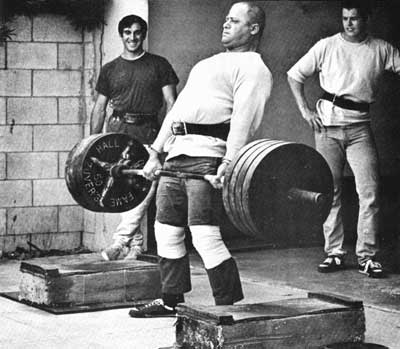 Gant was the only lifter I have known who held the world record deadlift and bench at the same time. There are men who hold three world records in the deadlift, yet can’t make the top ten bench list. Their muscles in the upper body are, I’m sure, as strong as anyone’s, but they are limited by body structure (e.g. short torso, long arms). Many of us are affected by this. But is there an answer?
Gant was the only lifter I have known who held the world record deadlift and bench at the same time. There are men who hold three world records in the deadlift, yet can’t make the top ten bench list. Their muscles in the upper body are, I’m sure, as strong as anyone’s, but they are limited by body structure (e.g. short torso, long arms). Many of us are affected by this. But is there an answer?
In the early 1970s, the Dynamo Club in the former Soviet Union had 70 highly skilled Olympic lifters. They were introduced to a system of 20–45 special exercises grouped into 2–4 exercises per work out and were rotated as often as necessary to make continuous progress.
They soon found out that as the squat, good morning, back raise, glute ham raise, or special pulls got stronger, so did their Olympic lifts. When asked about the system, only one lifter was satisfied with the number of special lifts. The rest wanted more to choose from. And so the conjugate system was originated.
When you have a body type that lacks say the muscles that squat and yet you squat on a regular basis, then a coupling of special exercises for the glutes, hamstrings, hips, and lower back are needed to fortify those areas. These special exercises will enable you to raise your squat once more.
Think about it. If you read only one book, you will only learn so much no matter how many times you read it. If you only squat, you will get only so strong because no new stimulus is introduced. This may not happen in the early stages of training, but as you become more advanced, you will need a more strenuous method of training. This training will indeed help your motor potential and help you to perfect your technical skill.
Before I present some examples of conjugate training, think about this. How much could you bench press the first time you tried? 200? Maybe 300? Now, how did you achieve that level of strength without ever having benched be fore? You did it through simplified training such as pushups and pull-ups. Those of you who could bench 300 the first time will never double that amount without doing specialized work to raise your strength, right?
Here are some examples of the conjugate method:
Glen Chabot bench presses only twice a month. Both times, he uses a close-grip style. He can do 405 for reps in the low teens. His best single close grip is 635 without a shirt. In between each workout, he rotates heavy dumbbell work on a flat or incline bench or very heavy bodybuilding exercises for lats, delts, pecs, and triceps.
This linking of special exercises has given Glen a 705 bench press at 275. Glen does not arch when he benches and has fairly long arms. He realized that he needed a special program to fortify his pressing muscles. This is a simple but very effective training program.
Kenny Patterson had a more complex system. He did floor press, chain presses, board presses, incline presses, and overhead presses, just to name a few. He rotated a different exercise each max effort day. On dynamic day, Kenny used three different grips on the bench press and used 60% of his no-shirt max for eight sets of three reps. He added many triceps extensions with dumbbells or the barbell, rows (one-arm, two-arm, chest-supported), pulldowns, delt raises, and forearm work.
This is a more complex system than Glen’s, but it suited Kenny’s needs. Kenny was a legitimate 700 bencher, having done it several times across the country.
Back in 2001, me and Mike Ruggiera made 900 squats. It was a 50-lb increase for him and a 40-lb increase for me, yet we did not do a single regular squat in between meets. We did box squats on speed days with a large amount of bands and weight. We also used the reverse hyper machine and did glute ham raises, pull-throughs, and abs.
I pulled a weighted sled before my squat workouts. On max effort day, we did good mornings (five varieties), belt squats, speed deadlifts (60% for 6–8 singles), and safety power squat bar squats to different box heights. Mike also pulled his fi rst 800 deadlift without having done any conventional squats or big deadlifts.
After squatting, he did deadlifts for singles with 60% for speed, and three days later he maxed out on special work. This is the conjugate method.
To push up a squat, heavy good mornings or squatting with different bars is done on max effort day. The different bars make squatting very awkward and extremely hard to do, much harder than a regular squat. (The same is true of box squats. They are harder than competition squats.)
On max effort day, we may do a type of squat in week one, a good morning in week two, and a front squat in week three. Each exercise contributes to the next week’s exercise, which in turn will build a bigger squat by strengthening the weaker muscle group and perfecting form.
The training is linked together, enabling you to raise your total. For instance, to build the glute and hamstring area, push up your reverse hyperextensions as hard as possible until your progress slows. Move on to pull-throughs for a week or two until progress in these slows as well. Then go to glute ham raises and again push as fast and hard as possible. Then pull a sled walking forward to build the glutes and hamstrings. It is possible to continuously gain strength in any body part by switching special exercises. As the effectiveness of the exercise decreases, switch to another one.
By training in this manner, it is possible to raise all types of strength throughout the year.
On max effort day, the entire volume consists of unidirectional loading. One training workout contributes to the next. Keep in mind that if you train a lift at 90% or more for more than three weeks, your central nervous system is negatively affected and your progress will go backward. But by switching exercises each week (for the high level lifter), you can use 100% and more each week.
The sequence of exercises you use doesn’t matter just as long as the load is maximal. The time it takes to do a maximal effort (i.e. a low box squat with a Manta Ray) lift is at least the same amount of time that it takes to do a max deadlift or squat. This is called “time under tension.”
The conjugate method also improves special physical preparedness (SPP) (e.g. speed deadlifts, plyometrics) and general physical preparedness (GPP) (e.g. sled drag ging). This is the most effective method to gain strength continuously throughout the year with no ridiculous off season.
No one can afford to take time off. By maintaining the speed work for the three lifts and increasing general work (e.g. upper and lower body sled work, lats, abs, triceps), you won’t go backwards. There are many methods of training, but by incorporating the conjugate method, you can’t miss.
A popular special exercise for the deadlift is squatting off a very low box. Angelo Berardinelli does his off a six-inch box. At this depth, Angelo’s back is in a position similar to his sumo deadlift style. We use a safety squat bar very often. When raising out of a squat or deadlift, the shoulders should raise first. The five inch camber on the safety squat bar teaches you to raise the head and shoulders first. Otherwise, you will buckle over forward.
To summarize, pick a core lift with a barbell and try to duplicate the same motion of the lift that you’re trying to increase. Pick 4–5 core exercises that work for you and rotate one of them every two weeks. Do a max single for a 2-3 rep max, but no more.
For example, you could do bent over good mornings, safety squat bar squats, Zercher squats, or very low box squats and then finish with two weeks of rack pulls. This represents a ten-week cycle, rotating each of the above exercises in two-week mini-cycles. It is important that you end with the most productive exercise for you leading into the meet.
After your selection of a core barbell exercise, pick 3–5 special exercises. Your workout should last less than 60 minutes. Pick a few special exercises and do them very intensely.
If your form is good, then your lower back may be holding you back.
Again, select four exercises for the lower back such as back raises, straight leg deadlifts off a platform, pullthroughs with the legs straight, and reverse hyperextensions. Rotate them when necessary. For weak hamstrings, do heavy reverse hyperextensions, squatting pull-throughs, glute ham raises, and sled pulling with your hands behind your back or below your knees while holding onto a strap.
For weak glutes, do heavy reverse hyperextensions, low belt squats, high rep deadlifts (two sets of 20 with back arched, glutes pushed out to rear, shoulder-width stance, hands outside shoulder-width; after the first rep, drop the bar to just below the knees, and catch and raise it as fast as possible for the entire 20 reps), and glute ham raises. If your abs are weak, do side bends with a cable bar or dumbbell, leg raises, standing lat machine curl-overs, and strict sit-ups.
Again, pick one exercise for each muscle group, use it until it becomes ineffective and then switch.
For the bench press, you could do board presses, floor presses, inclines, declines, or rack lockouts for singles. Rotate one of these every two weeks. You could do ultra wide bench presses for a 6RM or three sets to failure with dumbbells with a two-minute rest between sets for singles and a 5–6-minute rest for high reps. Then pick some type of triceps extensions with a bar or dumbbells, some type of lat work, and raises for the front, side, and rear delts.
There are many types of exercises for each muscle group. Just change when one stops working, and your lifts should continue to increase all year long. By training with this system, you can max out every week of the year while working continuously on speed and building muscle mass. It works for us, and it will work for you. It is the most effective form of training we have ever tried, and in the past 36 years, Westside lifters have tried them all.
Just remember, it’s the selection that counts. You must pick a lift or exercise that builds your particular weakness. Don’t get caught up in doing an exercise that your friends like but that does little for you. George Halbert has special exercises he uses for his bench. Chuck Vogelpohl does things that no one does, but they help his squat and deadlift. Amy Weisberger did front and overhead squats to help her squat.
=====
Part II Coming Soon
Live The Code 365,
--Z--
PS: Be smart when applying methods you read or learn from others and elsewhere. Do I personally use and apply EVERYTHING Louie speaks of? NO. I learn through trial and error what works best for me and my athletes and adapt accordingly, as should you.
On the flip side, you must always expand your knowledge and learn more, especially from those have been under the bar and in the trenches longer than you have.
We've got several never heard before audio interviews with Louie Simmons of Westside Barbell HERE.

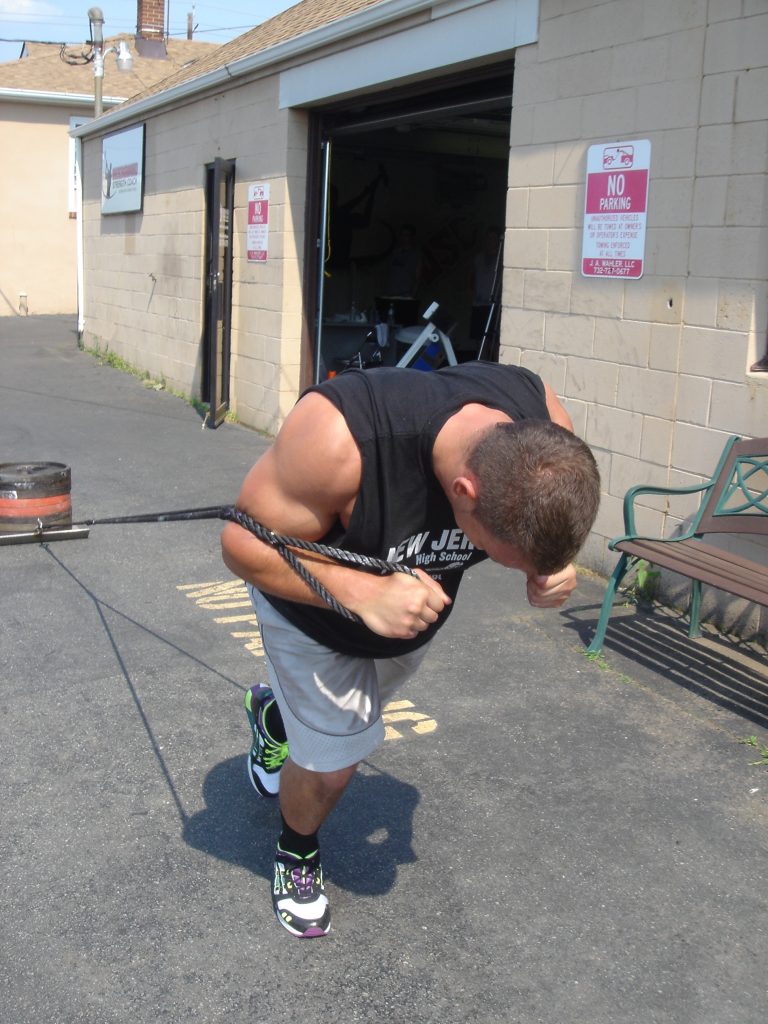
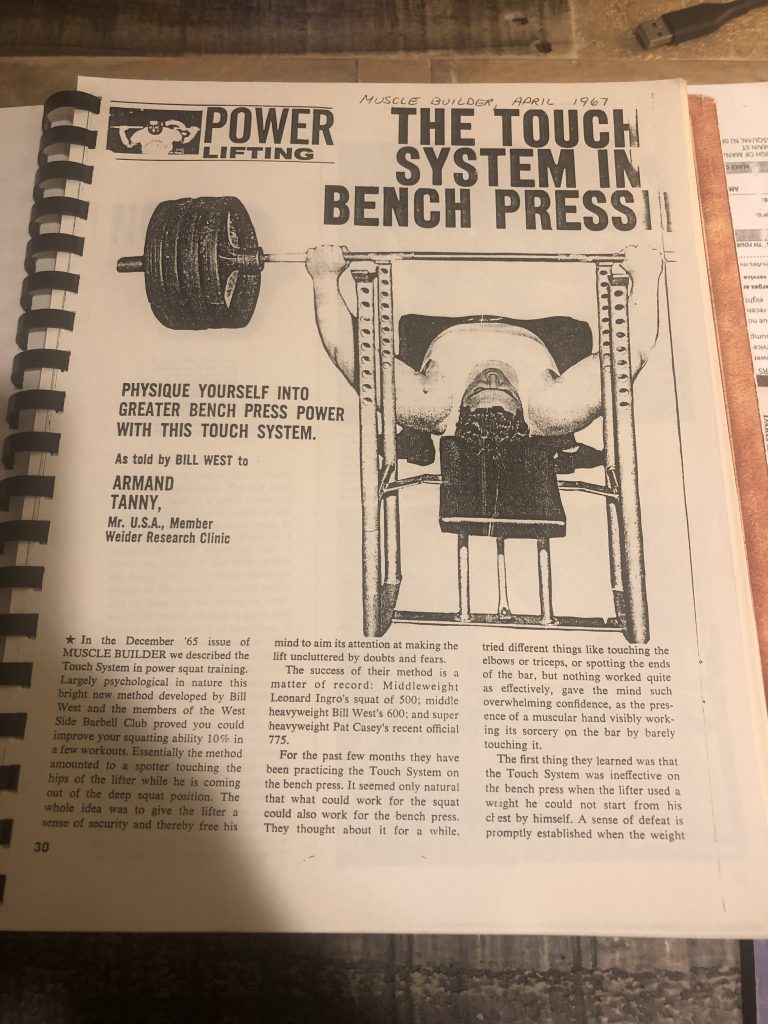
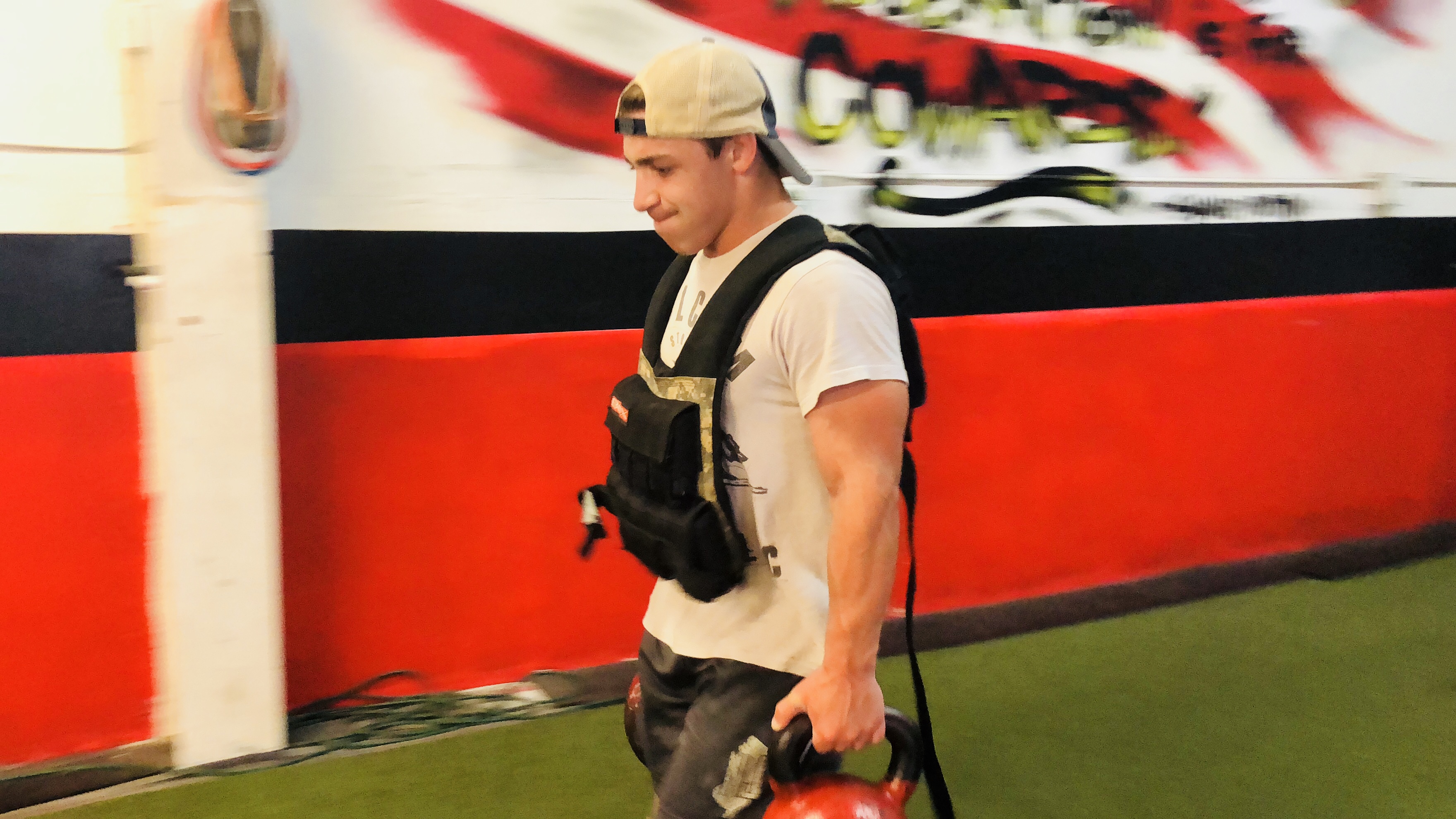

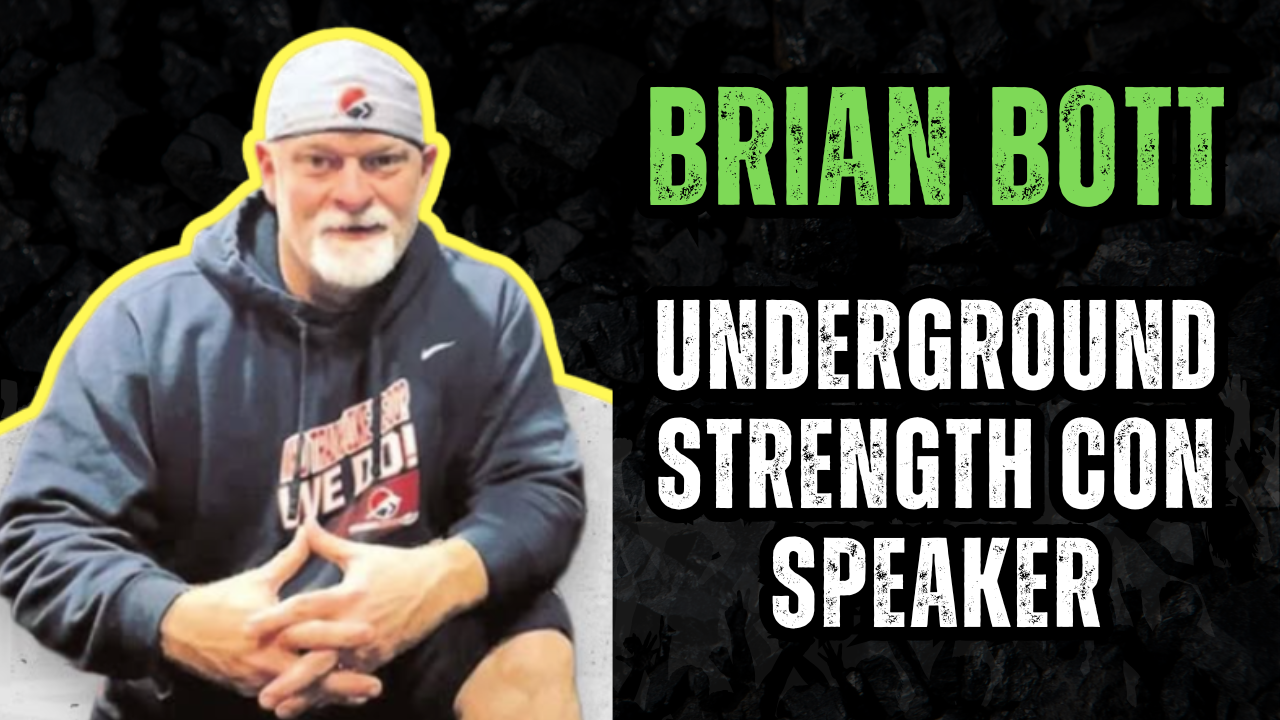
16 Responses
This is golden,
Cheers Zach
I was just studying Westside methods this morning. This is a great overview. Thanks Zach
Zach,
You are the man. Perfect way to start the week.
Keep it Rock’n
Blaine
Nice pearl of wisdom, thanks Zach.
I have a question. Does the same method work for conditioning? Say, if one was doing power cleans (barbell) density style, and switched to say kettlebell snatches when things got ‘stale’? Would that work?
Thanks,
Gabe
Great post Zach! Be sure to thank Louie for your readers.
Damm!!! this is awesome info… pure gold…….Zach like always thanks for coming thru with great material
Reading this got me thinking about Wendler 5/3/1 and westside approach,
Those 2 sentences especially:
Training is not as simple as doing five sets of five reps, five sets of ten reps, or any combination of sets and reps.
When lifters repeatedly use the same simple method of training to raise their strength level, they will eventually stall
Any comments Zach?
Awesome article right there.
Zach (or anyone)- I want to do some thick-bar training but my college gym doesn’t have one and neither does the one I use back home. Is there a safe/easy way to turn a regular bar thick? Thanks!
Great info, goes in the face of the traditional weight room methods I learned 35 years ago. 3 sets of 10 reps……no wonder I flat lined, quit lifting and then came back stronger…stale muscles, maybe. I was told at that time I needed to take some “supplements”. Every time I attempted to squat heavy, I got injured, weakest link needed trained, not the squat. Great wisdom in this article, thanks for posting it. Never to old to learn.
Dominic – hey bro, Jim’s program is based on the changes of percents rather than constantly changing the main lifts.
The change in percents, which are layed out for you in his program, allow you to constantly make progress.
One of my Coaches for my gym has been 5/3/1 for a good few months and is getting stronger every workout, good to see!
great article!
always refreshing to hear the oldschool.
however I think it is easy to get lost in the myrid of options for beginer and intermediate hobby lifters unless you have a good grasp of exercise science. And that requires more than reading a few articles.
It reminds me of what mike boyle said about the difference between chefs and cooks.
a cook follows a recipe and a chef can create them.
untill you have cooked for 5 years you are not ready to be a chef,
my advice as a trainer in genral is pick different 90 day programs and cycle through them and observe what affects they have on your body.
doing four meso cycles a year unless you are training competitively for a specific event is a great way to avoid staleness overtraining and plateaus.
keep up the inspiration -Ash
Ashley, very cool idea and spot on!
–z–
Zack just great stuff ! So awesome to find another trainer that gets it and posts some very usefull content! Thanks !
Great read bro,keep it up
Z,
Keep the motivation and training secrets rollin’ Brah.
Tremendous, once again!
Thanks, Z!